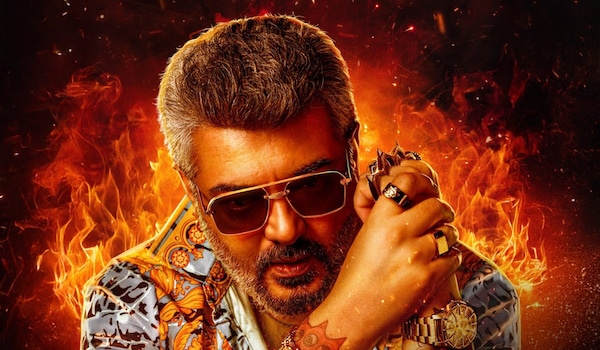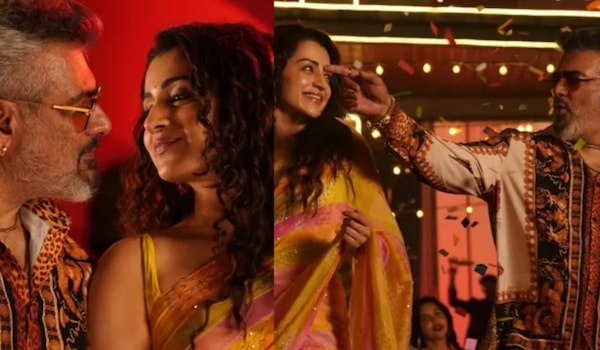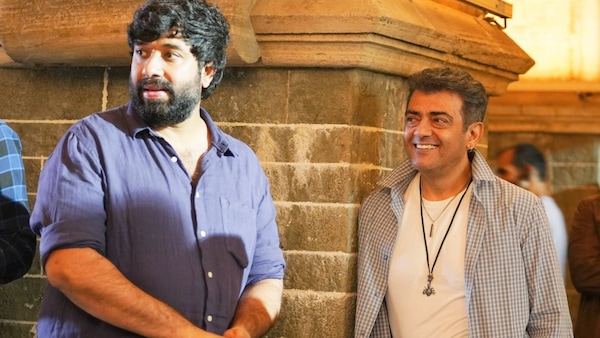Good Bad Ugly movie review: Adhik Ravichandran’s fan service is crash course on Ajith’s career, but never rises above being a showreel
Good Bad Ugly movie review: Adhik Ravichandran and Ajith’s GBU is a fanboy cinema, and has its right theatre moments and Easter eggs, if that’s all you want to enjoy a film.

Last Updated: 01.14 PM, Apr 10, 2025
Good Bad Ugly movie plot
AK aka The Red Dragon (Ajith Kumar) is a gangster with a past, who chose to surrender, after his wife separates him from their son Vihaan at childbirth, citing his violent ways. After 18 years, and only communicating with his Spain-brought-up son through video calls, AK chooses to meet Vihaan in person for the latter's 18th birthday. But what happens when Vihaan is blamed with serious allegations and gets arrested? AK must get going to his old ways to save his son, from a crime network in Spain.
Good Bad Ugly movie review
Moments after watching Good Bad Ugly (GBU), a thought came to me. What would have been Adhik Ravichandran’s brief while making GBU? Would it have been: Let’s make it a competition on how many guesses it would take the audience to find the number of Easter eggs tucked into GBU? Mostly so.
What would you do with the first opportunity you get to work with a personality that you have revered all along? Would you rather make them do new tricks or satiate yourself by recreating all that you enjoyed them doing on screen? It’s also a fine dabble to make them do within your sphere of thinking. But Adhik Ravichandran chooses to go on to make a film that is a showreel of the illustrious career of Ajith Kumar, or in precise a crash course on the actor’s silverscreen life so far.

Adhik, who has shared screen space with Ajith Kumar in Nerkonda Paarvai, leaves no stone unturned to bring back all the colours of Ajith Kumar. Okay, so I would be using a lot of Ajith’s references, so I might as well shorten it to AK (as the actor prefers to be called). Adhik, too, doesn’t want to dwell too much on thinking about what to name his protagonist, that he names AK… well, AK in GBU.
So AK, who has been Dheena, in the past, is Red Dragon now, had romanced his wife Ramya (Trisha Krishnan) to the song Vizhiyil Un Vizhiyil (from Kireedam), had Malaysia dance to his tunes, thanks to his Billa days, and even has some good and bad in him, like the actor recalls his Vaalee avatars when he cooked up stories about Sona to his Priya. If that’s not enough, Priya actually makes a comeback, and that’s a reunion you had expected for long.
Not to forget, his “adhu” is popular among his foes, as much as the now-banished word “Thala” makes silent appearances and a visual cue with horns superimposed on the actor ‘thala’. If that isn’t enough, GBU also serves as a vehicle to propagate the messages that Ajith often advices his fans, that “Life prechana vandha ena maari face pananum, oda kudadhu” (One should face problems in life like me, not run away) and “Na engayum koothatha kootiyadhu kedayadhu” (I have never gathered a crowd gathering), referencing to the actor’s reservation to public appearances.
Right from start to end, GBU makes an unapologetic case for fanboy cinema, that it forgets to work on its writing. Adhik, who crafted the much-entertaining screenplay in Mark Antony, loses ground only to be carried away in his star worship. It takes the first half for him to bounce back and make sure the writing too needs to be backed, albeit the Easter eggs. And that’s when the redemption in GBU begins.
In GBU, it is the unapologetic AK that one gets to see, who completely surrenders to Adhik’s vision of celebrating him onscreen. Undoubtedly, it is AK’s swag that carries the film like a charm, and that he makes it his moments even when he utters his contemporary’s dialogue “I’m waiting” and when his right hand Tyson (Sunil) asks for karapori, right when Dhanalakshmi… ahem.. Trisha…sorry Ramya is right there as they are fleeing Bombay.
You could see AK letting himself loose and enjoying onscreen, the calm and reserved actor in patterned and eccentric shirts, as he gets to waltz his way, giving pure entertainment. I once again reiterate, GBU is a film that keeps giving you an adrenaline rush with one callback after another, but when it comes to fleshy writing, the expectations aren’t met. And talking about expectations not met, a certain yesteryear chartbuster being recreated would have been better in multitudes had the artiste been trained much better in dance.

Adhik makes the right calling cards, be it in the form of background score, cue dialogues, mannerisms and even for his supporting actors. There is a mention of punnagai arasi for Prasanna, who plays AK’s brother-in-law, and Trisha, who started her early days in her career with the film Lesa Lesa. Evidently, it’s the cast that pulls the best strings with the help of their illustrious filmography. Arjun Das, who gets a special space to perform with his duality, gets to brandish his evilness, but had the writing been more fleshed out, GBU could have been yet another milestone.
But the shortcomings in GBU are starkly visible if you strip off references and calling cards. On paper, the story is simple and single-layered, that relies a lot on the actors and the communication they make with the audience through their dialogues, and pop culture references. With its lags and thinly layered screenplay, Adhik’s film is not as solid, if not for the stardom it carries.

Good Bad Ugly movie verdict
GBU is a fanboy cinema, and has its right theatre moments and Easter eggs, if that’s all you want to enjoy a film. GBU takes slow to find a pace in its writing. At times, it fumbles too evidently. But if you are someone who watches films for the joy of theatrical viewing and nostalgic celebration, this film is for you.

 Premium
Premium